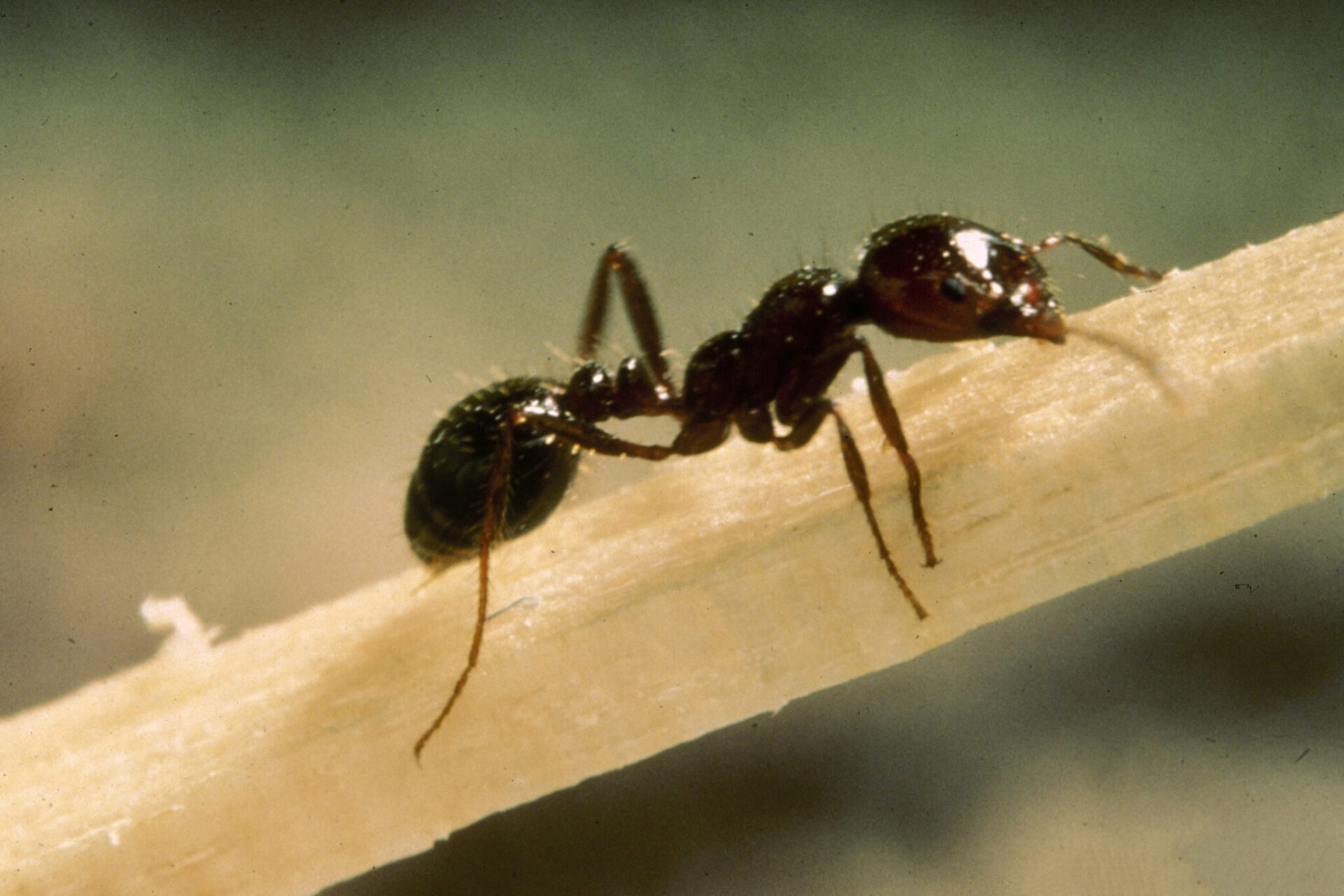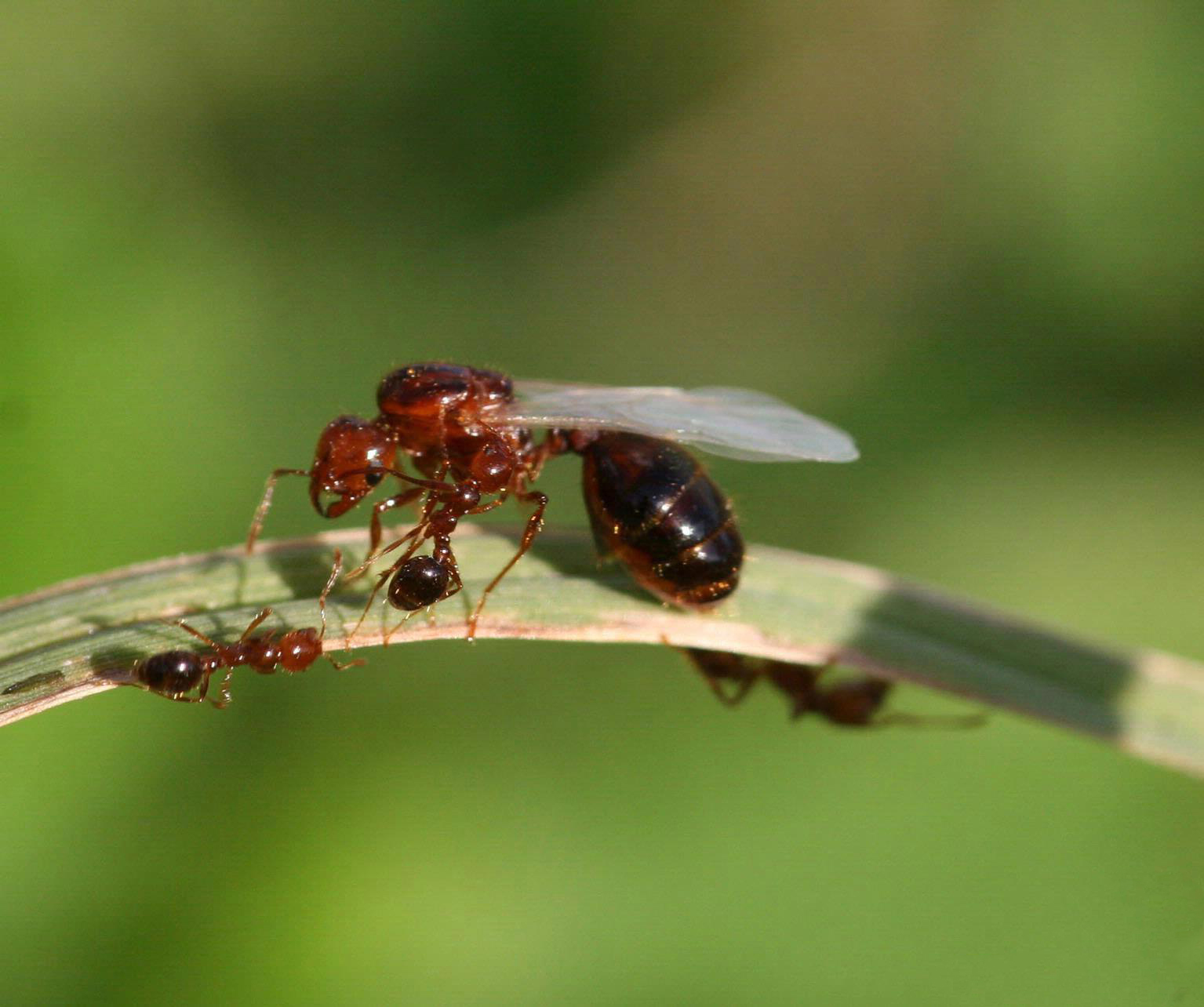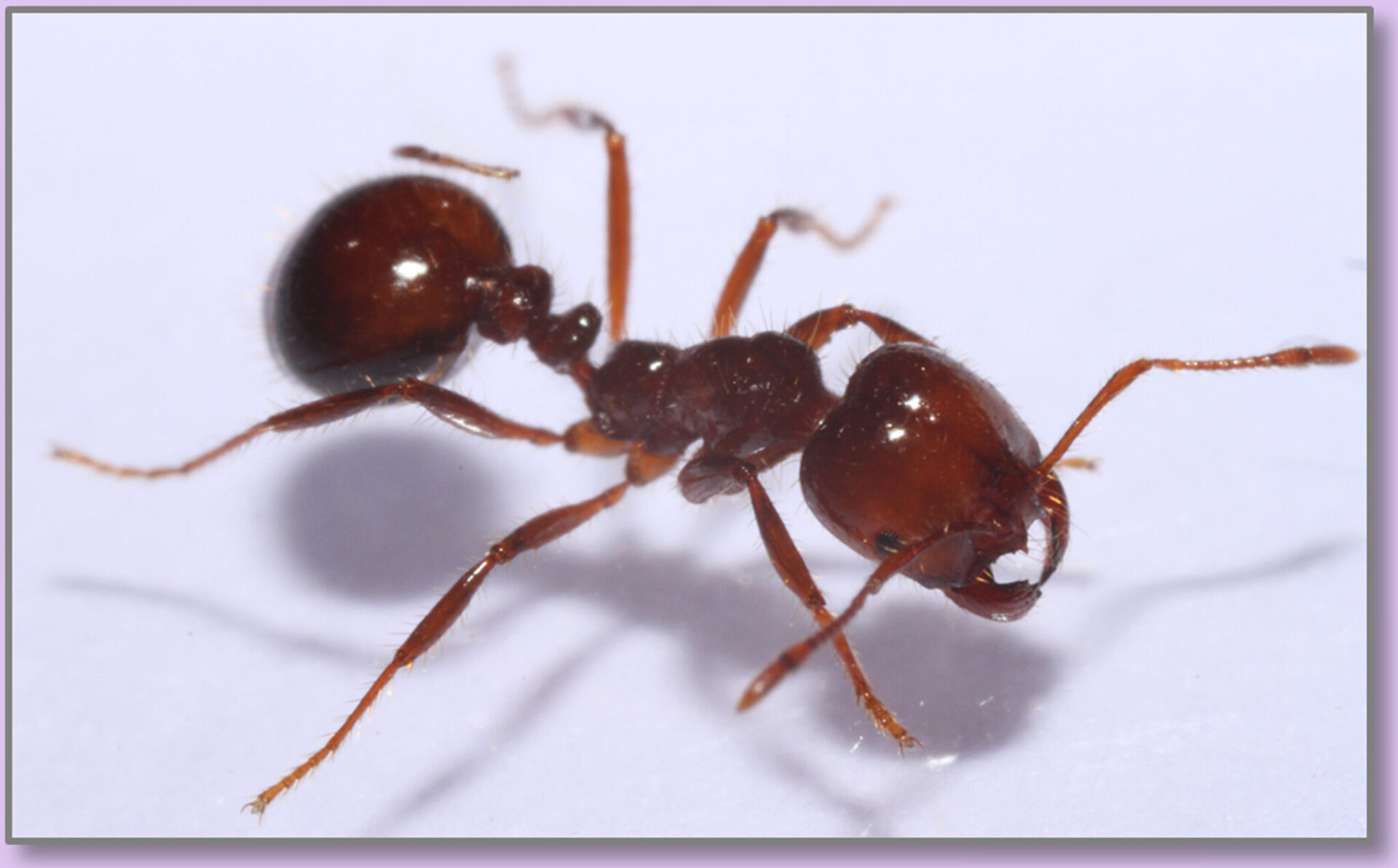California’s arid conditions have slowed the spread of red imported fire ants since they were first introduced into the state in the late 1990s. But if you have them in your almond orchard – especially if you have microsprinklers that raise humidity – Extension entomologists recommend an aggressive baiting program starting in spring when temperatures warm.
“We’ve seen some really good results with the baits that are available now,” said Kris Tollerup, a UCCE IPM advisor. “You have to be diligent with Southern fire ants and pavement ants, and it’s becoming a little more common with RIFA.
“I’m not recommending any baits specifically, but you may use an insect growth regulator, then come back with a stomach poison, or you can go with two IGRs about six to eight weeks apart, starting in early May when it’s warm. If you get out there early and you’re aggressive, I think they can be well managed in almonds.”
Mike Tanner was Merced County agriculture commissioner in the late 1990s when they found a RIFA infestation near Snelling on a beekeeper’s property.
“They were pretty established in that little area,” he said. Working with the California Department of Food and Agriculture, he and other county agricultural commissioners were getting a handle on statewide infestations when CDFA halted eradication funding.
Tanner has since retired from Merced County and has a small almond orchard near Merced where he continues to battle RIFA.
“They’re getting pretty widespread in the county and the state, actually,” he said. Based on advice from his PCA, Tanner makes two applications of ant bait before harvest spaced one to two months apart. So far, the treatments have kept kernel damage low, based on his handler reports.
“It seems to be working pretty good – it’s all a matter of the timing and doing a good job of applying the material,” Tanner said.
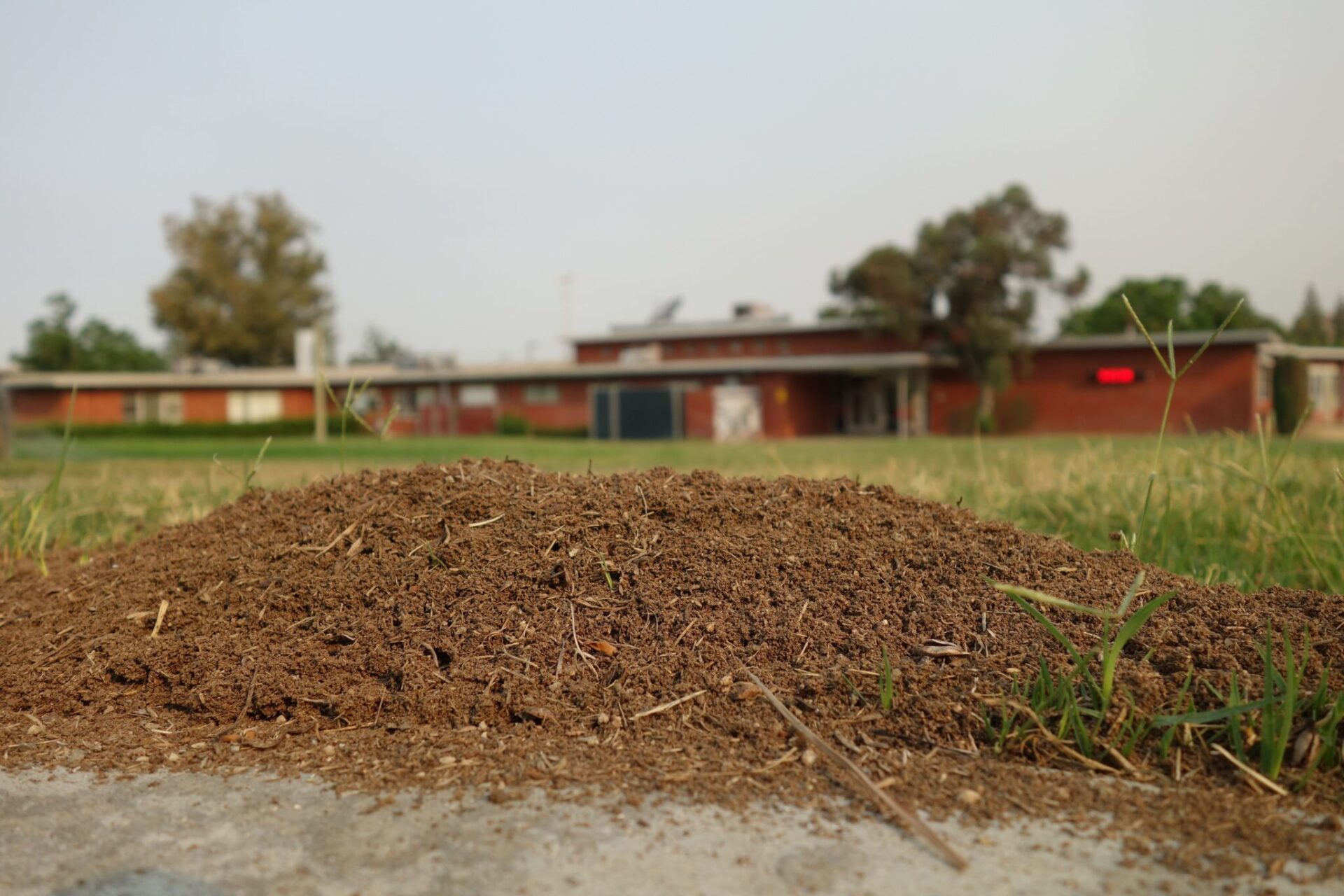
RIFA v. Southern Fire Ants
RIFA can be difficult to tell apart from the native orchard-dwelling Southern fire ant, Solenopsis xyloni, with the naked eye, Tollerup said. Both are 1/16- to 1/5-inch long and dark reddish-brown.
A key differentiating factor when viewed under a microscope is RIFA (Solenopsis invicta) has three clypeal teeth or spines on its head compared to just two for Southern fire ant.
In an orchard, RIFA mounds typically are about 1 foot tall and about 2 feet wide, taller and wider than those of Southern fire ants, said Tollerup, who’s based at the UC Kearney Agricultural Research and Extension Center near Parlier. They are built of loose dirt and may resemble gopher mounds.
But he also has seen RIFA mounds that are lower to the ground, possibly having been topped by mowers. In addition, RIFA build underground tunnels in and around orchards and in row middles that can be used as identifying features. Unfortunately, Tollerup said, weeds and other vegetation can cover these tunnels, hiding them from view.
Mounds of Southern fire ants, on the other hand, tend to be irregular in shape and are built of scattered soil with multiple obscure entrances, according to UC IPM.
What really sets them apart in an orchard is RIFA’s aggressive behavior when a nest is disturbed. The worker ants will come boiling out, climbing and stinging everything in their path.
“They’re far more aggressive than Southern fire ant and have a very, very nasty sting,” he said.
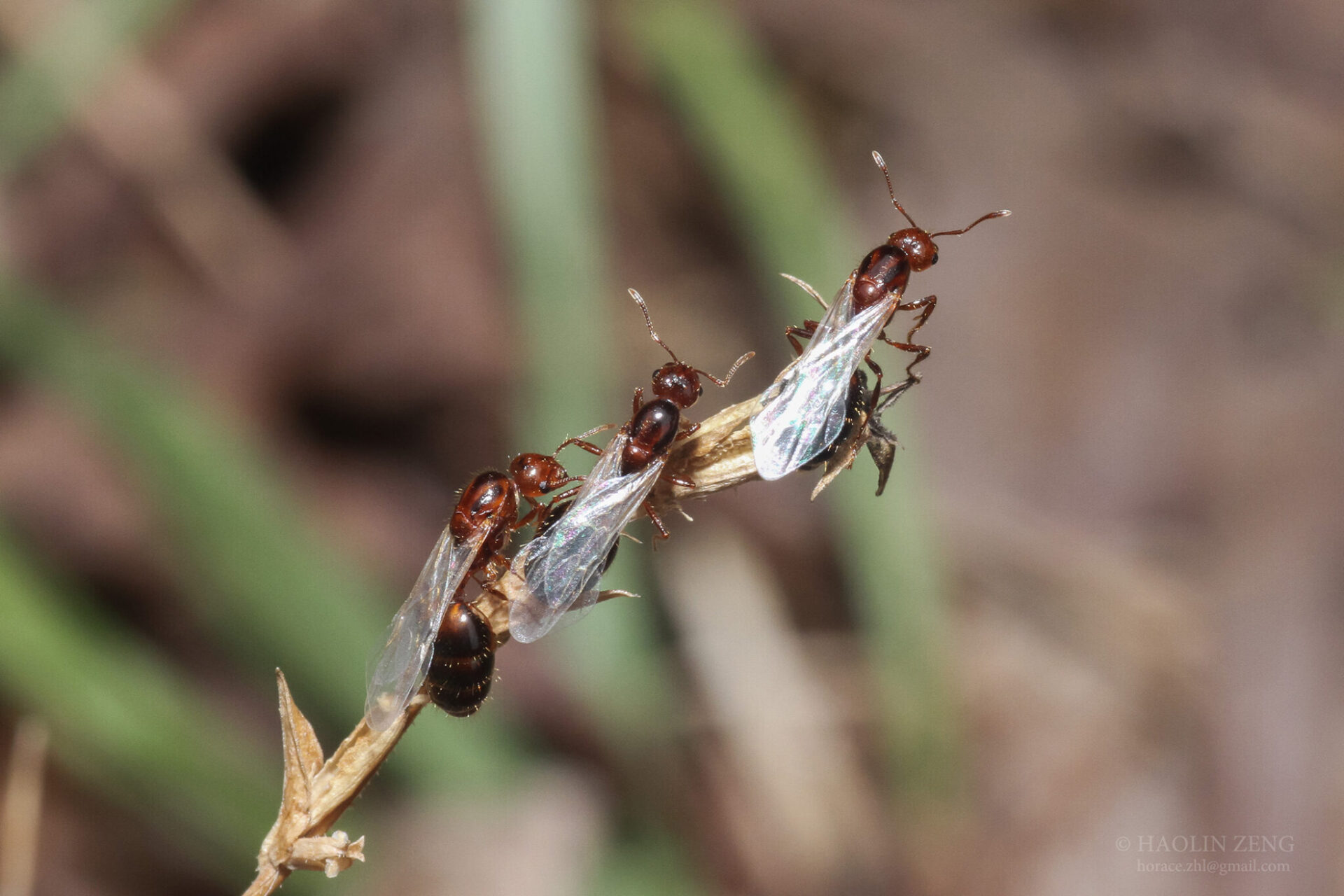
Go on the Offense
Much like Southern fire ants, RIFA are lipid or protein feeders, damaging almond kernels drying on the orchard floor after shaking. Depending on the year and infestation severity, kernel damage from ants can exceed 10%.
To determine whether you have RIFA, begin surveying your orchard for ant mounds in late April or early May when warm weather prompts ant activity. If you find some, place two to three uncapped plastic vials each containing a piece of hot dog near them for about 15 minutes.
Carefully cap the vials and place them in a freezer for several hours to kill the ants. Contact your UCCE county Extension office for the next steps in identification. If you indeed have RIFA, Tollerup recommended a two-step control program that involves applying registered ant baits – comprising corn grits coated with soybean oil and a minute amount of insecticide – to the orchard floor.
Attracted by the oil, worker ants take the bait back to the colony where it is consumed. Bait is most easily applied using a small motorized broadcast spreader on the back of an all-terrain vehicle.
Treat when ants are actively foraging, and avoid doing so within 24 hours after an irrigation or 48 hours before an irrigation. The soil surface should be dry so the corn meal bait doesn’t absorb moisture, since wet baits are not attractive to ants.
Two general classes of insecticides are labeled for orchard ant control: IGRs and stomach toxins.
IGRs, such as Esteem and Extinguish, are slower-acting and must be brought back to the colony and fed to the queen or brood. Depending on the chemistry, it will sterilize or kill the queen or halt brood development. IGRs may take up to eight weeks for a noticeable reduction in foraging activity.
Stomach toxins, such as Clinch and Altrevin, work directly on worker ants, reducing foraging activity within three and one week, respectively. But they do not have the residual of IGRs.
For large infestations, Tollerup recommends treatments of two IGRs or one IGR and one stomach toxin during the summer spaced six to eight weeks apart.
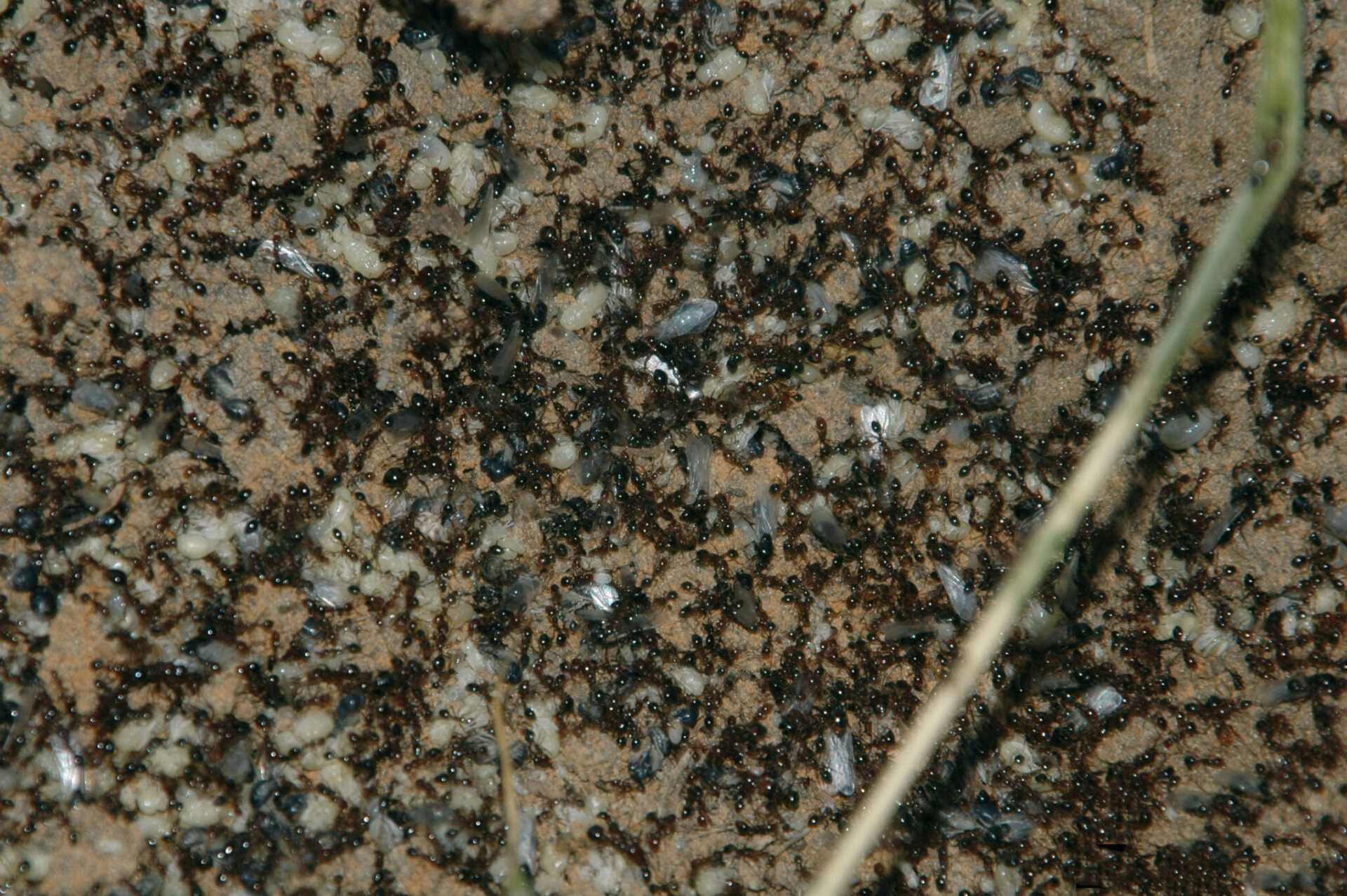
Unique Reproduction
RIFA have a unique reproduction system that helps them expand their territory in conducive environments.
Like many other social insects, only the queen RIFA can mate and reproduce. Winged reproductive forms live in the colony until they embark on flights of up to 1,000 feet off the ground, where they mate midair with males. The males fall to the ground and die shortly afterward, with fertilized females returning to the ground to dig nests 3 to 4 feet below the surface and lay eggs. In the process, females shed their wings and may consume them for nutrients.
Although mating flights can occur throughout the year, they are most common in spring and fall during warm, but not hot, temperatures. They also typically occur shortly after a rain, which is a big reason why RIFA infestations have remained somewhat localized in the state, Tollerup says.
“They depend on warm weather, but their mating flights really are queued by rains, and we just don’t have those kinds of weather patterns in California,” he said. “It’s Mediterranean, and we don’t get summer rains typically. That’s the biggest reason why we haven’t seen more spread.
“With that said, the orchards that have seen the most severe infestations are ones that have sprinkler irrigation. They queue in on that with their mating flights, and the soil has to be soft enough for the queen to dig a nest and lay eggs.”
The queen initially cares for the first life cycle of larvae, with future generations of workers caring for her and subsequent offspring. A queen can live up to seven years, while sterile workers typically live up to five weeks.
Once established, nests grow rapidly and can have upwards of 250,000 workers. In California, there are two RIFA biotypes. One has a single queen in each colony. The other, with multiple queens, usually has much more extensive underground tunnel systems and a much greater number of workers.
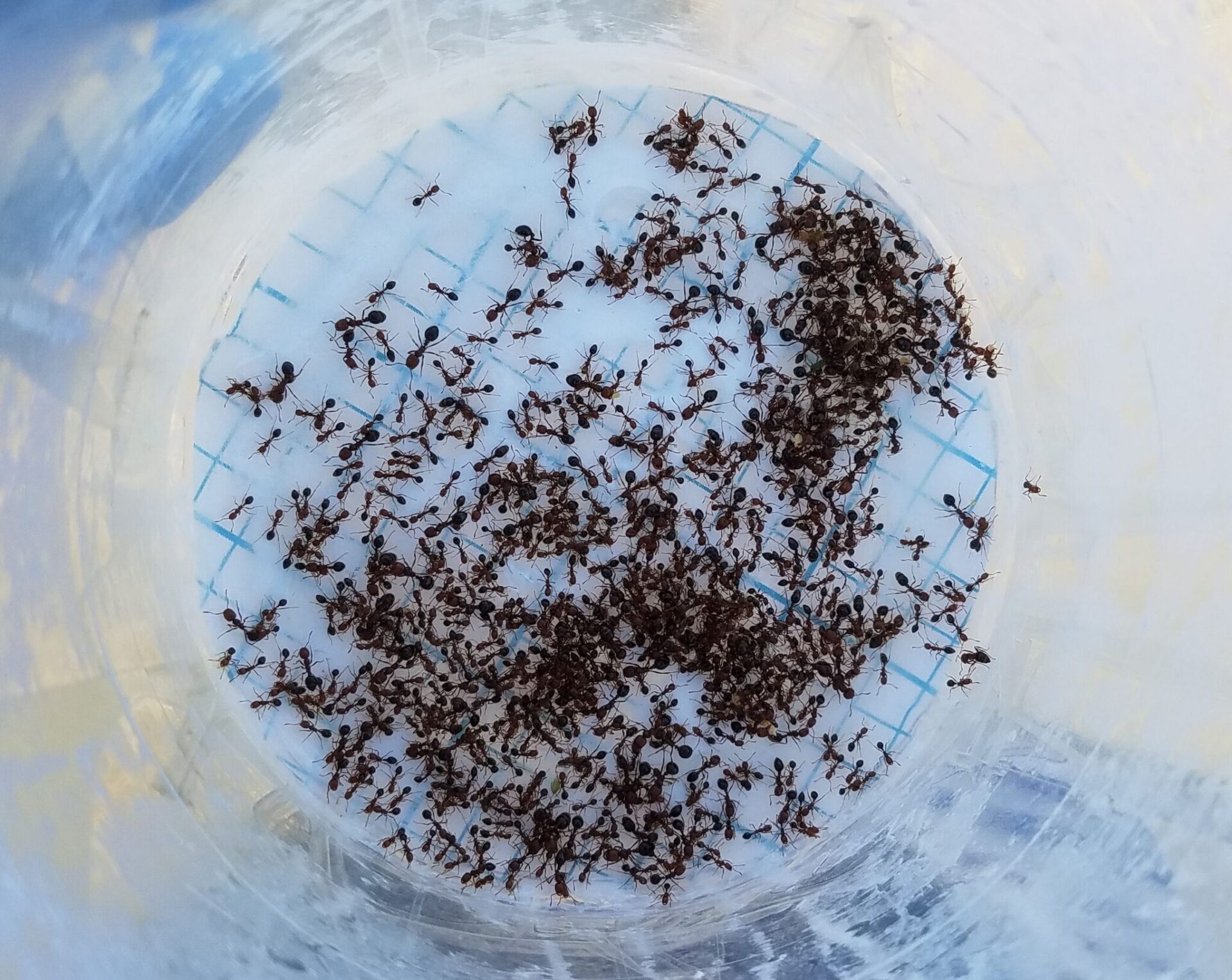
Unwelcome Visitors
RIFA entered into the state in 1997 in beehives from Texas and infested almond orchards in Kern, Fresno and Stanislaus counties. In 1998, they were found in a 50-square-mile area of Orange County, leading to a quarantine of the entire county. CDFA conducted an eradication effort from 1999-2003, but has since dropped it.
The exotic species is currently found scattered throughout parts of Southern California as well as the Central Valley, according to the Center for Invasive Species. Nearly all of the finds are near irrigated landscape or orchards.
